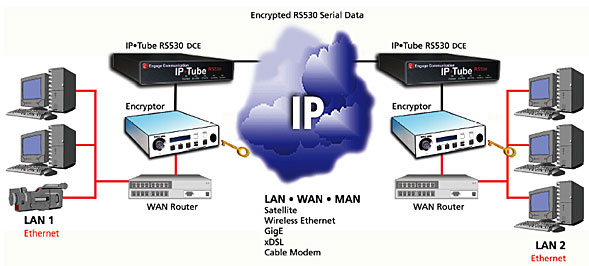Kg-84 Comsec Module User's Manual
COMSEC Points of Contact Listing Retention Periods for COMSEC Files, Records, and Logs Completing Locally-Prepared SF-153 COMSEC Material Accounting Reports Reporting Page Check Discrepancies in COMSEC Material/Related Devices and CCI Minimum Page Check Requirements for COMSEC Material EKMS Suite Assuming the Duties of EKMS Manager AN/CYZ-10. The KG-84 was also used by NATO and, from 6 November 1989 onwards, by the Government of Australia. The price for a single KG-84A unit in 1988, was US$ 5000. From the mid-1990s onwards, KG-84 was gruadually replaced by the smaller and more versatile KIV-7 — announced as an embeddable KG-84 module — which has the form factor of a CD-ROM player. T - Retention Periods for COMSEC Files, Records, and Logs U - Completing Locally-Prepared SF-153 COMSEC Material Accounting Reports V - Reporting Page Check Discrepancies in COMSEC Material/Related Devices and CCI W - Minimum Page Check Requirements for COMSEC Material X - EKMS Suite Y - Assuming the Duties of EKMS Manager. TACLANE Encryptor Training. The TACLANE Encryptor Operator Training course is a four-day course offered in both our Scottsdale, AZ and Annapolis Junction, MD facilities. The course combines classroom presentations and hands-on-exercises designed to teach you how to install, configure and maintain the TACLANE-FLEX (KG-175F), TACLANE-Nano (KG-175N), TACLANE. MANUAL FOR EMPLOYING JOINT TACTICAL COMMUNICATIONS JOINT COMMUNICATIONS SECURITY References: See Appendix J. Purpose.This manual provides a brief description of the COMSEC equipment and outlines COMSEC procedures for operating the common baseline circuit switch network, MS network, CNCE, theater data networks, and point-to-point circuits.
The KG-84 family of equipment was a series of general purposecryptographic devices intended to replace existing, aging equipment andsatisfy emerging secure communications requirements. The 80 series familyhad no designator other than Tri-Tac which was a communications platformconsisting of the TYC-39 (data) and TTC-39 (voice) systems. Both systemswere comprised of two shelters.KG84A's were general, high capacity key generators used to encryptand decrypt teletypewriter and digital data in both tactical and fixedplant environments. It has four selectable traffic key slots, improvedremote rekeying, and mandatory EIA-RS-449 control signed. Data isprocessed at digital rates from 50 to 9,600 baud (non-synchronous), upto 32,000 Kb/sec using an internal clock. It can operate at data ratesup to 64,000 Kb/sec using an external clock for synchronization and is capable of operating in full duplex, half duplex, or simplex modes. The KG-84A may be used in tactical, strategic, ship/air, and fixed plantenvironments. It was approved for use at all classification levels.
The KG-84C was a Dedicated Loop Encryption Device (DLED), and boththe KG-84A and C variants were designated as General Purpose TelegraphEncryption Equipment (GPTEE). The KG-84A was primarily used for point-to-pointencrypted communications via landline, microwave, and satellite systems.The KG-84C was an outgrowth of the Navy high frequency (HF) communicationsprogram and supports these needs. The KG-84A and KG-84C were devices thatoperated in simplex, half-duplex, or full-duplex modes. The KG-84C containsall of the KG-84 and KG-84A modes, and a variable update counter, improvedHF performance, synchronous out-of-sync detection, asynchronous ciphertext, plain text, bypass, and the European TELEX protocol. The KG-84 A/Cis certified to handle data at all levels of security. It is a ControlledCryptographic Item and is UNCLASSIFIED when unkeyed. Keyed KG-84 equipmentassumes the classification level equal to that of the keying material used.
Kg-84 Comsec Module User's Manual Instructions
Secure Terminal Equipment (STE) is the U.S. government's current (as of 2008), encrypted telephone communications system for wired or 'landline' communications. STE is designed to use ISDN telephone lines which offer higher speeds of up to 128 kbit/s and are all digital. The greater bandwidth allows higher quality voice and can also be utilized for data and fax transmission through a built-in RS-232 port. STE is intended to replace the older STU-III office system and the KY-68 tactical system. STE sets are backwards compatible with STU-III phones, but not with KY-68 sets.[1]
STE sets look like ordinary high-end office desk telephones and can place unsecured calls to anywhere on the public switched telephone network (PSTN), as well as secured calls on it via the phone's backwards compatible STU-III mode. There is a PC Card slot in the STE that allows a Fortezza Plus (KOV-14) Crypto Card or KSV-21 Enhanced Crypto Card to be inserted. When an NSA configured Crypto Card is present, secure calls can be placed to other STE phones. STE phones are 'releasable' (unlike STU-III sets). All cryptographic algorithms are in the crypto card.
Newer STE sets can communicate with systems that use the Secure Communications Interoperability Protocol (SCIP) (formerly Future Narrowband Digital Terminal (FNBDT)). There are upgrade kits available for older units.[2]
Models[edit]
- Office: The Office STE is the most widely used STE and provides voice and data access to ISDN (Integrated Services Digital Network) and PSTN (Public Switched Telephone Network) telecommunications systems.
- Tactical: The Tactical STE is similar to the Office STE but can also access the TRI-TAC (TRI Service TACtical) network and has a serial EIA-530A/EIA-232 BDI (Black Digital Interface) port.
- Data: The Data STE provides remote access for voice, fax, data and video-conferencing. This model has two serial EIA-530A/EIA-232 BDI ports and allows for data transfers to multiple destinations.
- C2: The C2 STE is similar to the Tactical STE but C2 has modified software for use with its Tactical Terminal Locking Handset mechanism.
- STE-R: Similar to the Data STE, the STE-Remote provides dial-in access to the Defense Red Switch Network (DRSN).
- VoIP: The STE now has Voice over Internet Protocol (VoIP) capability, available as an upgrade to the current models, or built into some new models.


As of 2007, a typical STE terminal cost about $3,100, not including the crypto card.[2]
References[edit]
Kg-84 Comsec Module User's Manual Free
- ^'Secure Telephone Unit Third Generation (STU-III) / Secure Terminal Equipment (STE)'. Federation of American Scientists. Retrieved September 2, 2010.
- ^ ab'STE: Secure Terminal Equipment: Direct Sale Pricing'. Archived from the original on 2006-10-15.
External links[edit]
